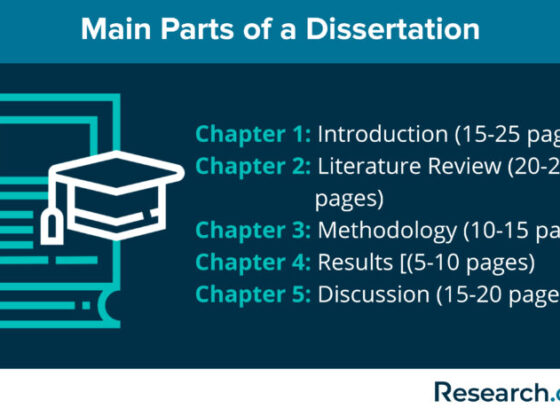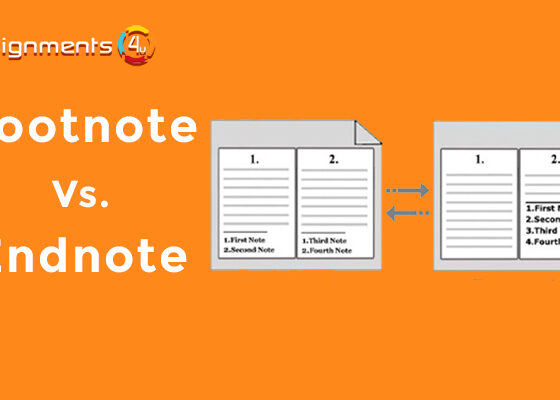Rank a blog Higher On Google search
Blogging is an art of expression through which you express and share your ideas with potential readers. Are you the one who writes blogs to express your mind? If not, start writing now because it is one of the most effective sources of inspiration. It is equally considered a great way to start generating traffic, reach new customers, cement your online reputation, and develop your brand awareness for the newer success you seek. If you want blog posts to achieve rankings on Google, this post could help you.
According to HubSpot, 55% of marketers have already confirmed that blog content writing is their top inbound marketing priority in the current context. So, learn How to Make Every Blog Article You Write Rank High in Google Search.
Let’s look at the other side of the mirror too when it becomes frustrating if your blog posts fail to generate the desired traffic and engagement. No matter how hard you try to craft them, you fail to attain recognition. Why? This key factor needs to be understood. Like you, there are many other business owners or entrepreneurs who are bound to face similar problems, they didn’t heed certain strategic blogging plans. After spending lots of time and effort to create a high-quality and well-researched blog post, you will seek a reward. Your discouragement would be highly painful if they don’t get any traction.
The blog posts you create should use a variety of on-page and off-page SEO tactics that can resultantly offer more opportunities to rank in the search engines and thus customers are perused to visit your website. Start with the basic yet most effective rule by writing long-form content which always plays a pivotal role in increasing your site’s online visibility.
Rank a blog High On Google search

We have discussed below the 21 most effective tips that are bound to offer your blog posts some extra traction and thus bring a large amount of traffic in the least possible period. Follow these tips for your blog posts to achieve rankings in Google. These are popular Ways to Rank a blog High On Google Search.
1. Keyword Research
Keyword research does not mean that you incorporate as many keywords as possible in your blog posts to ensure how to Rank a blog Higher On Google search. There is no dearth of keyword-researching tools like the most popular one—Google Keyword Planner. It can help you the most to find out and target the keywords that your prospects search for and also those keywords that you have a chance of ranking for. While incorporating the keywords naturally, you should consider the longer phrases (3+ words) that are highly relevant to your business.
Also, you should use your long-tail keywords in the URL, Meta Title, Alt image tags, image captions, Header tags (H2, H3, etc.) and descriptions.
2. Image Optimization
Do you want to know how to Rank a Blog in Google’s Top 10 Search Results? Google and similar other reputed search engines too can’t read the images until and unless they are optimized meticulously. It is therefore important that you focus on the image optimization process. It is vital to ensure that Google and the rest search engines have the proper know-how of images you use. Wherever you upload an image or a video to your blog, ensure the inclusion of keywords in a file name and then fill in alternate text fields with a brief, keyword-rich description of the photo image used.
3. Internal & External Linking
Don’t forget the reality that there are countless benefits of going for internal linking such as improved usability through the anchor texts, help spread the link juices, boost page views, improve PageRank and boost engagement to name a few. On the other hand, though, linking out to other reputed websites equally proves effective. Having valuable external links can prove helpful in improving the authority and PageRank of your website. Before linking out to others, check their websites’ authority and the value of information on the said pages to avail the desired benefits.
4. Social Media Channels
If you evaluate keenly, you can find that there are many social media channels that you can use to create connections with potential and current customers. Publish your blog posts on those channels at regular intervals besides ensuring it that you offer prompt replies if someone comments on them. If your blog has the buttons of some popular social media channels, your readers will be able to share your posts easily with mere a couple of clicks. Apart from generating as well as engaging sufficient traffic, you can equally build an online reputation by using social media channels. This way you will ensure to rank a blog higher on Google search.
5. Mobile-Friendliness
If your blog is not mobile-friendly, then undoubtedly you are going to miss huge traffic which could be easily yours without any additional effort. Search Engine Land reveals that nearly 60 percent of the searches are now from mobile devices or smart devices which anybody and everybody has easy access to nowadays. Ever since the updation of the Penguin algorithm in April 2015, Google is heavily favored mobile-friendly websites. Keep such factors into consideration as to how you must understand the ardent need to go mobile-friendly to give a new boost to your blog posts and websites for their maximum reachability.
6. Avoid Thin Content
Do you want to know How to Write Blog Posts That Consistently Rank Well on Google? You must understand the importance of Long-Form Content in SEO. A page with 300 words or less is considered as a thin content. Google offers little to no value, so you should either beef up the content or not publish it.
How to Fix Thin Content Issues to Avoid a Google Penalty
- Add more content
- Delete copied content
- Content should be internally linked
- Avoid keyword stuffing or other black-hat SEO tactics
7. Consider Long-Form Content
A blog post with 2000 words is considered a long-form post. On the other hand, if you are busy and do not have time to write such as elaborated blog, then you can consider a blog post with 1200 words.
Benefits of Creating Long-Form Content
There are many benefits of creating long-form content, including:
- Improve Online Visibility
- Boost User Engagement
- Encourage Social Sharing
- Better Link Building
- Improve Website Authority
8. Use Your Keywords in the heading (H1) and Subheadings (H2, H3, H4. Etc.)
Do you want to know how to optimize blog posts for SEO? If your answer is yes, try to include your primary and secondary keywords in your headings and subheadings.
Using your keywords in headings and subheadings makes it easier for search engines to read and understand your content. They give priority to your blog in the search. On the other hand, avoid overusing keywords.
To keep your readers engaged, all you need to do is use your primary and secondary keywords and their different variations in your blog post’s heading and subheadings.
9. Write Unique Titles and Meta Descriptions
Your craving for how to write SEO-friendly blog posts would remain incomplete until you are trained to write unique titles and meta descriptions.
Title Tag Optimization is the second most important on-page ranking factor for any website, after contents. For title tags, you have limited space between 50-60 characters, so you need to wrap up your thoughts within the character limit.
In the same way, you mustn’t ignore meta descriptions. Alike title tags, you have also a word limit for meta description, which is up to 155 characters.
Points to keep in mind while writing Titles and Meta Descriptions:
- Include relevant keywords
- Avoid duplicate titles and descriptions
- Don’t stuff your keywords
- Put the most important words first in title tags
- Include your brand name in the title tags
- Encourage users to click
- Write for people, not machines
10. User-Friendly URLs
To ensure your blog posts rank organically in the Google searches, you must learn URL Optimization for SEO. Apart from short and descriptive URLs, your URLs should look pretty.
You are also suggested not to use URLs with special characters or dates. This is because they make your URLs unnecessarily long and ugly.
How to make your URLs user-friendly
- Describe your Content in URLs
- Include Keywords in URLs
- Use Hyphens to Separate Words of URLs
- Use Lowercase Letters in URLs.
- Keep URLs Short
- Use Static URLs
11. Improve Your blog’s Page Load Speed
Page loading speed is also a ranking factor, so you need to keep it to a minimum. If your blogs take more time to open, your audience will leave you and go with your competitors.
Here are some of the many ways to increase your page speed:
- Enable compression
- Reduce redirect
- Remove render-blocking JavaScript
- Leverage browser caching
- Improve server response time
- Use a content distribution network
- Optimize images.
12. Dwell Time
To achieve better rankings in Google, it is expected of you to increase dwell time. That is the time passing between the time you click a search result and return to the SERPs (search engine result page). Therefore, dwell time is an important ranking factor by Google; hence the more extensive the time range, the better. Below listed are some ways to achieve it:
- Ensure a rich multimedia experience;
- Make the Intro attractive & appealing;
- Include a lot of subheadings.
13. Higher CTR in SERPs
All the reports and practices have proved that Google search results with higher CTRs are getting pitched higher up the SERPs. But the question that pesters the mind is how to ensure that your blog posts will get a high CTR.
Give featured snippets the go-ahead: To cash on the featured snippets, you can use various resources such as best tools, best hotels, or restaurants to have a get-together on New Year’s Eve and et al. from the variegated examples suiting your need. To win the featured snippets, here you can come across other actionable ways as well, like:
Bring a catchy title: Add spice to your titles laced with emotional adjectives. Numbers in headings are also counted to grab a lot of attention, such as:
- Some useful resources are;
- 100+ Blog Post Title Templates That Grab Attention;
- 200+ Awesome Blog Post Title Templates for Powerful Headlines
14. The “Skyscraper Technique”
The good old Skyscraper Technique with a proven track record is a brilliant way to earn more links, and thereby, it helps boost the performance of your blog. Concisely, it means finding trending and well-performing articles, making the content more appealing and detailed, and reaching the relevant people for outreach. Here’s an example of how this technique helped Brian Dean increase his search traffic by 110% in 14 days. This way you can help people find your blog on search engines.
15. Voice Search Optimization
It has been aptly made clear by Google in its claim that one-fifth of the queries on Google are voice searches. Thus there is not even an iota of doubt if the future of SEO is voice search. It, therefore, is crucial for you to optimize your content for voice search. Look at some ways to do that:
- Strive for question-based queries, especially “how-to” or “how many;”
- Ensure optimization of local search results.
It has been observed that asking for directions or nearby locations on Google is found in abundant numbers so far as search queries are concerned.
16. Update Your Content
If it is seen from the SEO angle, it is in the immense interest of your blog post ranking to refresh the content and enrich it with up-to-date facts now and then. It is no hidden fact that Google always admires and loves fresh content. You also have the opportunity to fix the broken links and improve the user experience when updating your content. With your previous SEO data stored, like page visits or CTR, you will find boosting an updated blog easier than beginning from scratch.
Updating content is one of the ways to ensure How to increase the Google ranking of a blog for free.
You May Also Like: How to Keep the Website Content Fresh
17. Understand Your Audience Demographics
Demographics include gender, country, city, age group, etc. Readers of a specific age generally search for explicit content. Similarly, what male readers would like to read on a blog, female readers would rather not. So, understanding who majorly reads your blog posts and who are the revisiting readers is vital. Suppose most of your readers are female and of age 20-35; the more they would like to read about beauty tips to prevent aging or blogs about wedding preps. Understanding demographics is one of the ways to learn how to rank a blog higher on Google search.
18. Check the Readability of Your Content
To rank your blog posts in Google, you need to have a unique style of writing that is comprehensive for the readers. As it is essential to write quality blog posts frequently, it is also vital to ensure that the content is free from grammatical and spelling errors and lucidly written. Make sure to get tools and resources to check the grammar and correct spelling errors. Also, write short, impactful sentences rather than keeping the sentences heavy with words. Frequent use of passive voice is also something that you need to avoid.
19. Write Catchy Headlines
A blog post headline is an essential factor that can help you understand How to rank a blog on Google’s first page. When someone searches for a particular topic in the search engine, the results page includes the headlines of relevant web pages. Making your headlines catchy would help you stand out and get you a lot of clicks. You can use certain words, termed power words by content writers, in your headlines to trigger emotions in the readers. However, you must keep the headlines subtle so they do not appear explicit or clickbait.
20. Understand the Importance of Interlinking
Interlinking is when you link your existing blog posts to a recent one. It is a main ingredient to ensure How To Rank Your Blogs on Google Search Within 24 Hours. Although this might seem insignificant, obtaining a good ranking on the search engine results page is very important. It is an instrument to make Google understand the relation between your blog posts in similar contexts. If you place internal links in your blog post subtly and strategically, it is bound to increase your traffic and dwell time and minimize the bounce rate. For example, when people come to read content where an internal link is placed, they might click on the link to visit another article. It maximizes their time on the website reducing the bounce rate. This is one of the ways to get more readers for your blog posts.
21. Concentrate on the Design
A great-looking website is always a gainer. People dislike website layouts and cluttered interfaces that run unnecessary ads and are too loud to obstruct reading. Pay attention to your website theme, choose something clear and minimal, and keep noticeable sections like popular posts, recent posts, and post categories. Ensure a separate ‘About Us’ section, contact pages, and drop-down menu to improve the user experience. Thousands of free and paid themes are available, depending on your blog’s niche, that you can use to enhance your blog’s appearance.
The discussed points will help you how to rank a blog in Google’s top 10 search results.
Conclusion – Rank a blog Higher On Google search
Creating blog posts is not only a time-consuming affair but also requires lots of resources and funds. If you get the assurance to receive the organic ranking, drive traffic, and improve views over some time, then you won’t hesitate to invest funds as required besides time and any other resources sought. The strategies discussed above will prove helpful to you from multiple angles. To write an informative and user-friendly blog you are advised to hire a content-generating company that has attained a reputation in the market and caters to such services to a large chunk of clientele.
Such companies boast their team of highly skilled professional writers from different educational backgrounds. They endeavor to satisfy the special and unique content requirements of the clients represented through various business niches. For example; reputed content agencies maintain their arena through a team of writers with multiple skill sets including the ones as dedicated newsletter writers who create customized professional newsletters.
Are you going to use these strategies which have been discussed above to ensure organic ranking and thus traffic to your blog posts? If not, then what is on your mind? Do share below!












